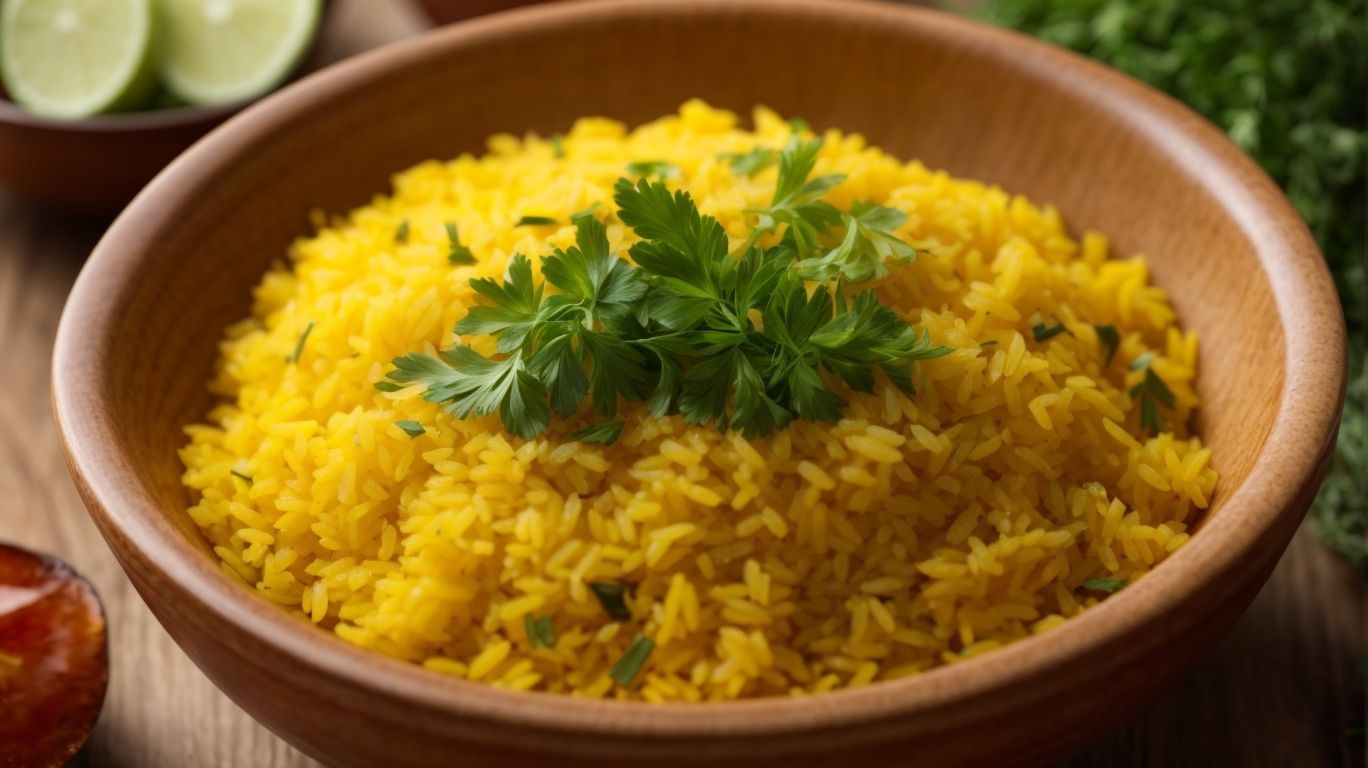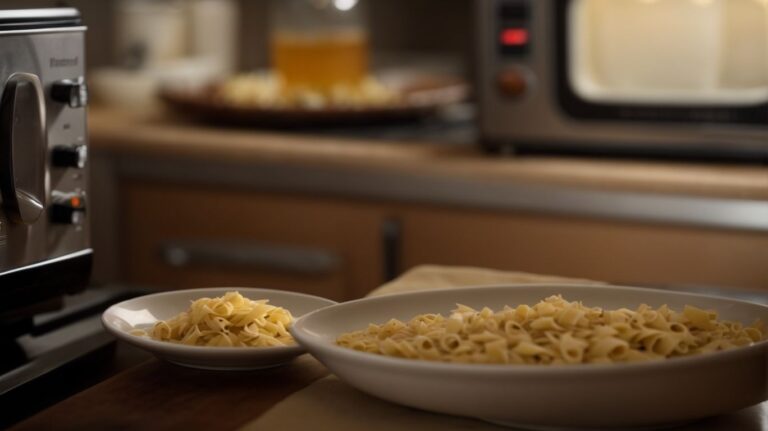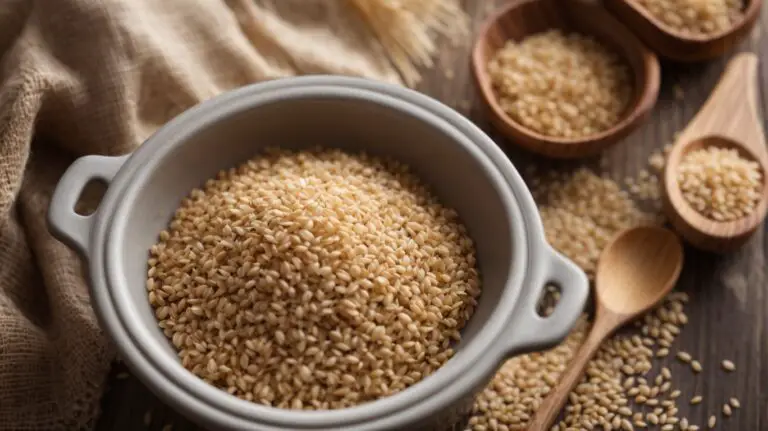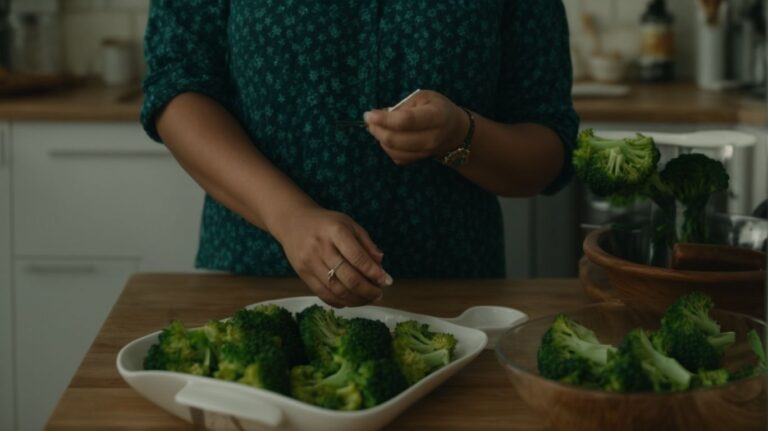How to Cook Yellow Rice?
.jpg)
Looking to add a pop of color and flavor to your dinner table? Look no further than yellow rice!
Explore the key ingredients needed to make this vibrant dish, including the type of rice and spices to use.
Get a step-by-step guide on how to cook yellow rice to perfection, along with helpful tips and tricks.
Discover serving suggestions and storage tips to make the most of your yellow rice creation. Let’s get cooking!
Key Takeaways:
Ingredients for Yellow Rice

Credits: Poormet.Com – Jordan Moore
Creating delicious yellow rice requires a blend of essential ingredients that infuse vibrant color and rich flavor into this classic side dish.
Key ingredients in preparing yellow rice include spices like turmeric, garlic powder, and onion. Turmeric not only imparts the signature golden hue but also offers numerous health benefits. Garlic powder adds a savory depth, while onions provide a sweet undertone.
To elevate the flavors further, techniques such as sauteing the spices before adding the rice and toasting it briefly can enhance the overall taste profile. These methods help release the oils and aromas of the spices, intensifying the dish’s taste.
When cooking yellow rice, various methods can be used such as stovetop, rice cooker, or Instant Pot. Each method can yield slightly different textures and flavors, allowing for personal preference in the final dish.
To achieve fluffy and aromatic yellow rice, use a good quality long-grain rice, such as basmati or jasmine. Rinse the rice to remove excess starch, which can lead to a sticky texture. Adding a bay leaf or a cinnamon stick while cooking can impart subtle, fragrant notes that complement the spices.
What Type of Rice to Use?
Choosing the right type of rice is crucial in perfecting the texture and taste of your yellow rice dish.
Regarding creating a delicious pot of yellow rice, opting for the right rice variety can make all the difference. Basmati rice, known for its fragrant aroma and elongated grains, is a popular choice that lends a light and fluffy texture to yellow rice. Jasmine rice, with its slightly sticky texture and subtle floral scent, adds a unique touch to the dish. Long-grain rice, such as Carolina Gold or Mahatma, provides a firm and separate result perfect for yellow rice dishes.
- For those looking to elevate their yellow rice to a gourmet level, specialty versions like Gourmet Yellow Rice or Latin Yellow Rice offer premium blends of spices and seasoning that infuse rich flavors into the grains.
- Incorporating seasonings like Badia Sazon can further enhance the taste profile of your dish, adding depth and complexity to each bite.
What Spices are Used to Make Yellow Rice?
The vibrant yellow hue and aromatic flavor of yellow rice are achieved through a carefully selected blend of spices and seasonings.
Essential spices for yellow rice include the luxurious saffron, known for its rich color and delicate floral notes, while turmeric brings a deep golden hue and earthy flavor. Garlic powder adds a savory kick, and sazon contributes a unique blend of flavors like garlic, cilantro, and annatto.
Toasted spices offer a depth of flavor, and Spanish spices like paprika and oregano bring a hint of warmth. For a diverse taste profile, consider adding cumin for its warm and nutty undertones and ají amarillo for a subtle spicy kick.
Other Ingredients for Flavor and Color
Beyond spices, additional ingredients play a crucial role in elevating the taste and visual appeal of yellow rice.
Butter adds a rich creaminess, while chicken broth contributes depth of flavor and keeps the rice moist. Onions provide a savory undertone, and cilantro brings a fresh herbal note that brightens the dish. Avocado oil offers a hint of nuttiness and a silky texture.
For added texture and contrast, nuts like peanuts and sweet dried fruits such as raisins can provide a delightful surprise in every bite. Herbs like parsley add a touch of freshness, and spices like cumin and kosher salt lend a warm, aromatic complexity to the yellow rice.
Step-by-Step Guide on How to Cook Yellow Rice
Mastering the art of cooking yellow rice involves following a precise series of steps to ensure perfect results every time.
If you’re opting for the stovetop method, start by rinsing 1 cup of long-grain white rice until the water runs clear, then drain thoroughly. In a saucepan, heat 2 tablespoons of oil over medium heat. Add 1 diced onion and cook until softened.
Next, stir in 2 teaspoons of turmeric, 1 teaspoon of ground cumin, and a pinch of saffron threads for that vibrant yellow hue. Add your rinsed rice and toast for a minute to enhance flavors. Pour in 2 cups of chicken or vegetable broth and bring to a boil.
Reduce the heat, cover, and simmer for about 15-20 minutes until the rice is tender and the liquid is absorbed. Let it rest off the heat for a few minutes before fluffing with a fork.
For the rice cooker method, follow the same initial steps but transfer the mixture to your rice cooker instead of a saucepan. Cook according to the rice cooker instructions for perfect hands-off cooking.
Step 1: Rinse and Soak the Rice
The first crucial step in the yellow rice preparation process involves rinsing and soaking the rice to achieve the desired consistency and texture.
This step is essential as it helps remove excess starch from the rice grains, which can cause them to become sticky or clump together during cooking. By rinsing the rice under cold water until the water runs clear, you can ensure that the grains cook up separate and fluffy. Soaking the rice before cooking also helps the grains absorb water evenly, resulting in a more uniform texture. Different varieties of rice may require varying soaking times; for example, basmati rice may only need 15-30 minutes, while jasmine rice benefits from a longer soak of around 30-60 minutes.
Step 2: Prepare the Spices and Other Ingredients
Once the rice is ready, the next step involves preparing the array of spices and additional ingredients that will infuse the dish with robust flavors.
For a truly aromatic yellow rice, fresh herbs like fragrant cilantro, pungent garlic cloves, and flavorful scallions are essential additions. These ingredients not only add depth to the dish but also contribute to its vibrant color. To elevate the flavor profile further, incorporate aromatic elements such as cumin for its warm, earthy notes, ají amarillo for a subtle heat, and tomatoes for a hint of sweetness. Enhance the flavors by seasoning each component generously, ensuring a perfect balance of taste. Be mindful of the layering technique – adding ingredients at different stages of cooking to build complexity and richness in every bite.
Step 3: Cook the Rice
Cooking the rice to perfection is a critical stage where each grain absorbs the flavorful liquid, ensuring a fragrant and satisfying dish.
When making yellow rice, the key is achieving the right water-to-rice ratio. For stovetop cooking, a common rule is to use 1.5 cups of water for every cup of rice. When incorporating the fragrant saffron, you may need a bit more water to balance the absorption. If using a rice cooker, follow the manufacturer’s instructions but typically a 1:1 ratio for white rice works best.
To enhance the color and aroma, infuse the saffron threads in warm water before adding to the rice. This step intensifies the flavor profile, creating vibrant yellow hues throughout the dish.
Step 4: Add the Spices and Other Ingredients
The final step in crafting delectable yellow rice involves adding the prepared spices and other ingredients to infuse the dish with layers of complex flavors.
One popular method for incorporating these aromatic elements is through sautéing them in oil before combining them with the cooked rice. Sautéing helps release the essential oils and deepen the flavors of the spices.
Another technique to intensify the flavors is toasting the spices and herbs in a dry pan before adding them to the rice, bringing out a more robust taste profile.
Depending on personal taste preferences, variations can include adding ingredients like minced garlic, diced onions, or even sweet peppers to the mix. These additional elements can complement the spices used and provide extra layers of flavor complexity to the dish.
Tips and Tricks for Perfect Yellow Rice
Unlock the secrets to mastering the art of preparing perfect yellow rice with these expert tips and tricks.
Regarding achieving optimal flavor profiles, consider incorporating aromatic spices such as turmeric, cumin, and saffron to infuse the rice with vibrant color and a rich depth of taste.
To maintain a fluffy texture, ensure that you rinse the rice thoroughly before cooking to remove excess starch. Utilizing a good-quality broth or stock instead of water can enhance the overall taste and fluffiness of the dish.
For a visually appealing presentation, garnish the yellow rice with freshly chopped herbs, such as cilantro or parsley, and serve it alongside colorful vegetables or protein-packed dishes.
How to Get the Perfect Consistency?
Achieving the perfect consistency in yellow rice involves a delicate balance of moisture, grains, and cooking techniques to create a fluffy and satisfying dish.
One crucial factor influencing the texture of yellow rice is the water quantity used during the cooking process. Properly measuring and adding the water to the rice is essential for achieving the desired light and fluffy consistency. Understanding the cooking times for different types of rice grains is vital for preventing overcooking or undercooking, which can significantly affect the final texture of the dish.
How to Avoid Burning the Rice?
Preventing burnt rice requires careful monitoring of heat levels, consistent stirring, and utilizing appropriate cooking equipment to ensure a well-cooked and flavorful result.
One effective strategy to avoid burning yellow rice is to adjust the stovetop heat to a lower setting once the water starts boiling. This gentle simmering will ensure that the rice cooks evenly without scorching. When cooking yellow rice on the stovetop, make sure to add slightly more water than usual to compensate for the added ingredients like turmeric. This extra liquid will prevent the rice from sticking to the bottom of the pan. Another useful technique is to initially sauté the rice in a bit of oil before adding water. This can help create a protective layer on the grains, reducing the likelihood of burning.
How to Add More Flavor to the Rice?
Enhancing the flavor profile of yellow rice can be achieved by introducing a diverse array of flavorful ingredients, spices, and herbs to elevate the dish to new heights.
One way to infuse vibrancy into your yellow rice is by incorporating a symphony of Spanish spices, such as smoked paprika and saffron, that bring a rich depth of flavor. Sautéing the spices with aromatic garlic and onion not only enhances their essence but also allows them to permeate each grain of rice, creating a harmonious blend of tastes.
For those craving a bolder flavor profile, experimenting with bold cumin or coriander can introduce an earthy undertone that complements the dish superbly. Consider layering in fresh herbs like cilantro or parsley right before serving to add a burst of freshness.
Serving Suggestions for Yellow Rice

Credits: Poormet.Com – Nathan Smith
Pairing yellow rice with complementary dishes enhances its appeal and creates a well-rounded dining experience that tantalizes the taste buds.
Regarding selecting accompaniments for yellow rice, the options are plentiful and diverse, catering to various dietary preferences.
- Meats: such as succulent grilled chicken, tender beef stew, or flavorful chorizo, offer a hearty and protein-packed addition to the meal.
- Seafood: lovers may opt for shrimp skewers, grilled fish fillets, or calamari rings to bring a hint of oceanic freshness to the plate.
- Alternatively, those inclined towards vegetarian choices can consider creamy coconut lentils, tangy mango salsa, or roasted vegetable medleys to infuse the dish with vibrant colors and textures.
What Dishes Go Well with Yellow Rice?
Yellow rice pairs exquisitely with a variety of dishes, from succulent meats and seafood to vibrant vegetarian options and flavorful spices.
For a perfect pairing with succulent meats like grilled chicken or slow-cooked pork, consider serving yellow rice with a side of black bean salad or grilled plantains for a well-rounded meal.
Seafood lovers can enjoy yellow rice alongside pan-seared shrimp or baked salmon, complemented by a fresh cucumber and avocado salad.
Vegetarian options, such as roasted vegetable skewers or stuffed bell peppers, pair beautifully with yellow rice infused with flavors of cumin and ají amarillo. Consider adding a touch of sweetness with raisins or crunchiness with toasted peanuts to create a delightful contrast in textures and flavors.
How to Store Leftover Yellow Rice?
Properly storing leftover yellow rice ensures that its flavors are preserved, and it can be enjoyed as a delicious meal on subsequent occasions.
When storing leftover yellow rice, it is important to transfer it to an airtight container to prevent moisture loss which can result in dry and unappetizing rice. Store the rice in the refrigerator at a temperature below 40°F (4°C) to inhibit bacterial growth. If you wish to freeze the yellow rice, ensure to use a freezer-safe container or resealable plastic bags. When reheating, add a splash of water and cover the dish to retain moisture and heat thoroughly to 165°F (74°C) to ensure food safety.
Conclusion
Mastering the art of preparing yellow rice opens up a world of culinary possibilities and delights for both home cooks and seasoned culinary professionals alike.
Yellow rice is a versatile dish that can be customized with a myriad of ingredients and flavors, making it a go-to side dish or main course in various cuisines. Its vibrant color not only adds visual appeal to a meal but also signifies its nutritional richness, often infused with anti-inflammatory turmeric and other health-boosting spices.
For those looking to delve into the world of yellow rice variations, reputable sources like Test Kitchen and innovative food studios offer a wealth of resources and recipes to help hone your skills and experiment with new adaptations. Understanding allergy considerations and dietary preferences plays a crucial role in creating inclusive and enticing yellow rice dishes for a wider audience.
From a business perspective, featuring yellow rice recipes on menus or incorporating them into professional culinary settings can attract a diverse clientele seeking flavorful and nutritious options. In the competitive food industry, offering unique twists on traditional yellow rice dishes can set establishments apart and showcase culinary creativity and expertise.
Frequently Asked Questions
How to Cook Yellow Rice?
Yellow rice is a delicious and versatile side dish that can be paired with various dishes. Here are some commonly asked questions about how to cook yellow rice:
What ingredients do I need to cook yellow rice?
The main ingredients for cooking yellow rice are white rice, water, turmeric, and salt. You can also add other spices and flavorings, such as garlic, onion, or saffron, depending on your preference.
Can I use a rice cooker to make yellow rice?
Yes, you can use a rice cooker to make yellow rice. Simply add the rice, water, turmeric, and salt to the rice cooker and follow the manufacturer’s instructions.
How much water should I use to cook yellow rice?
The general rule of thumb for cooking rice is to use a ratio of 2 cups of water for every 1 cup of rice. However, depending on the type of rice and your preferred consistency, you may need to adjust the amount of water. It’s best to follow the package instructions for the specific type of rice you are using.
How long does it take to cook yellow rice?
Cooking time for yellow rice may vary depending on the type of rice and the cooking method. Generally, it takes about 18-20 minutes to cook yellow rice on the stovetop and 30-40 minutes in a rice cooker.
Can I freeze leftover yellow rice?
Yes, you can freeze leftover yellow rice. Allow the rice to cool completely, then transfer it to an airtight container and store it in the freezer. When ready to eat, thaw the rice in the refrigerator overnight and reheat it in the microwave or on the stovetop.






